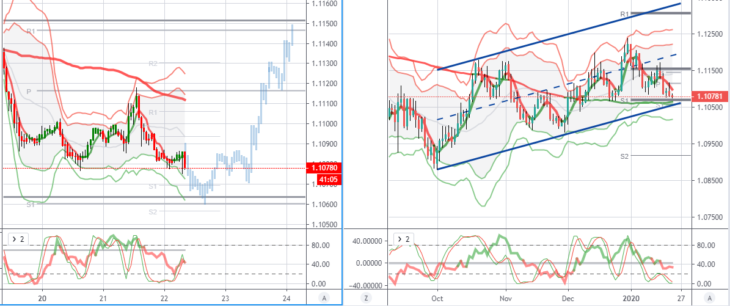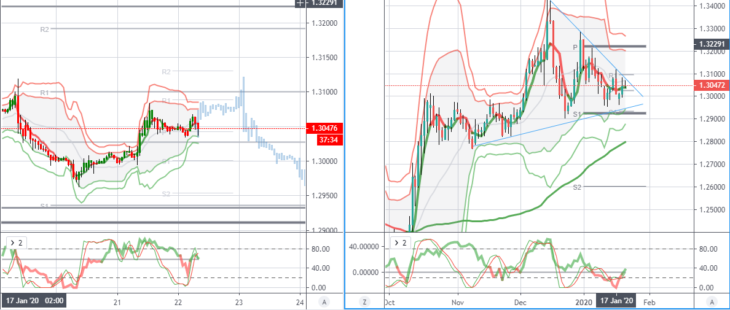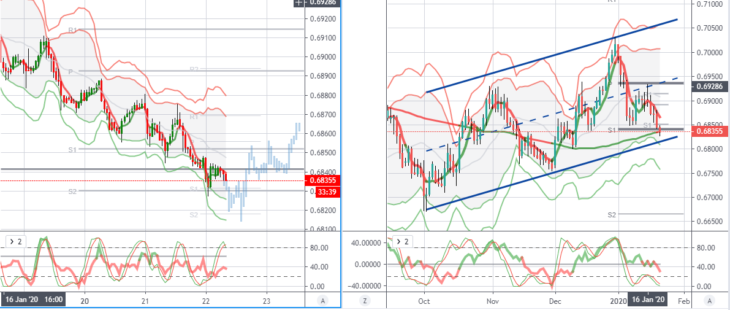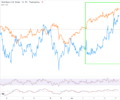Main market themes
- The Asian equity markets have rebounded this morning following yesterday’s decline reflecting concerns about the potential impact of China’s Coronavirus for the Asian market. The Chinese authorities have promised to take steps to contain the spread of the disease.
- US President Trump said that he expects to achieve a trade deal with the EU but will, if necessary, impose tariffs on cars.
- The UK House of Lords voted in favour of five amendments to the Brexit Bill but these are expected to be overturned in the Commons.
- The US market retreated from record highs on Tuesday as markets reacted to news that the first case of Coronavirus (or Wuhan Virus) originated in China with SARS-like outbreak potentials has been reported in the US.
- The Dow Jones lost 152pts or 0.5%, partly because of the 3.3% drop in Boeing’s share price following announcement that its 737 Max model would be grounded through mid-2020. The S&P500 slipped by 0.3% weighed down by energy, industrial and materials sectors while NASDAQ edged lower by 0.2%.
- Higher safe haven demand for treasuries pushed yields lower by 3-5bps. 10Y UST last traded on Tuesday with a yield of 1.77%. Gold price was little changed at $1,558.17/troy ounce, crude oils dropped as markets shrugged off Libyan crisis, taking comfort in ample market supply – Brent crude lost nearly 1% to $64.59/barrel.
- BOJ’s more optimistic growth outlook suggests no change to policy in 2020.: The Bank of Japan (BOJ) kept its policy lever unchanged as widely expected and revised its growth projection for 2019, 2020 and 2021 fiscal years in its January Outlook report The upgrade reflects its more optimistic growth outlook and suggests that it would keep its ultra-loose policy unchanged for the rest of 2020. The impact of global slowdown is expected to be limited although likely to remain for the time being. Domestic demand is likely to follow an uptrend on highly accommodative financial condition and active government spending although (demand) has recently declined due to the effects of consumption tax hike and natural disaster. The BOJ still expects its main inflation gauge, the CPI less fresh food to increase towards its 2% target but the momentum toward achieving the target is “not yet sufficiently firmed”. Risks to economic activity remained skewed to the downside particularly regarding overseas development. Risks to prices are skewed to downside due to downside risk to the economy and “uncertainties over developments in medium-to long term inflation expectation. It made upward revision to 2019-2021 growth forecast but revised down inflation projection for the same period. Median forecast for real GDP growth was revised higher to 0.8% (revised from +0.6%) for 2019, 0.9% (+0.7%) for 2020 and 1.1% (+1.0%) for 2021. For 2019, CPI ex fresh food inflation is expected to be at 0.6% (revised from +0.7%) in 2019, 1.0% (+1.1%) in 2020 and 1.4% (+1.5%) in 2021.
- German ZEW Index jumped in response to trade deal: The Germany ZEW Investor Sentiment Index for the Eurozone jumped by 14pts to 25.2 in January (Dec: 11.2), reflecting German investors’ significant gain in confidence in response to the inking of US-China Phase One trade deal that has lifted much uncertainties surrounding both countries’ trade relation. A similar index for Germany’s outlook also spiked by 16pts to 26.7 (Dec: 10.7).
- UK job report offered a breath of relief: The UK economy added a whopping 208k in the three months to November (Oct: +24k), its largest gain since January 2019, making up for the minimal gain in October and the two back-to back contractions in August and September. The unemployment rate was held steady at 3.8% in the same period (Oct: 3.8%) matching consensus forecast. The gain in average weekly earnings, a key gauge of wage growth meanwhile managed to remain unchanged at 3.2% YOY, better than consensus estimate. November job report turned out to be better than expected, offering relief to markets that the labour market has regained some strength following a period of slight weakness and has led investors to price in lower probability of a BOE rate cut at the end of this month. Nonetheless, UK data remained weak in general and the chances of a 25bps reduction remained above 60% .
- December existing home sales is one of the only reports in a sparse week in the US. Sales fell in November, but that looks to be an aberration as most recent data point to a pickup in the housing market, so markets expect a strong rebound in the December.
- Overnight, the Australian December labour market report will be released. Markets currently see the probability of a rate cut by the Aussie central bank at its 4th February policy meeting as just over 50%, so tomorrow’s data could tip the balance one way or the other.
Today’s Options Expiries for 10AM New York Cut (notable size in bold)
- EURUSD: 1.1090 (EUR328mn); 1.1100 (EUR441mn); 1.1150 (EUR456mn); 1.1210 (EUR281mn)
- GBPUSD: 1.3000 (GBP202mn); 1.3050 (GBP271mn)
- USDJPY: 108.50 (USD1.3bn); 109.25 (USD385mn); 109.50 (USD950mn); 110.00 (USD440mn); 110.25 (USD330mn)
- AUDUSD: 0.6780 (AUD516mn); 0.6900 (AUD325mn)
EURUSD (Intraday bias: Bearish below 1.1120 Bullish above)

From a technical and trading perspective, with the optionality in the 1.11/1.1150 area expiring, prices took out the 1.11 support, as 1.1120 caps corrections look for a test of pivotal 1.1040/60, look for daily reversal patterns from this level as an opportunity to take on long exposure. If bids fail to emerge here bears will press for a test of bids towards 1.10 and stop below.
GBPUSD (Intraday bias: Bearish below 1.3050 Bullish above)

From a technical and trading perspective, as 1.3035 caps corrections to the upside look for a test of bids and stops below 1.2950. A close above 1.31 would suggest a delay to downside objectives opening a retest of range resistance, with offers and stops above 1.32 targeted. Watch for 1.3035 to now act as support, if this level holds intraday expect a test of offers and stops above 1.31.
USDJPY (intraday bias: Bullish above 108.65 targeting 110.50)

From a technical and trading perspective, the breach of 109.50 provides a window for upside extension to challenge the 110.50 equidistant swing objective. Only a failure back below 109.80 would suggest a period of consolidation/correction. Note significant sentiment divergence developing which will likely be addressed over coming sessions.
AUDUSD (Intraday bias: Bullish above .6910 Bearish below .6885 below)

From a technical and trading perspective, the failure to establish ground above .6940 has seen the anticipated freshly minted long liquidation opening another test of .6840/20 bids. If bids fail to emerge here look for a test of ascending trendline support to .6800.
Disclaimer: The material provided is for information purposes only and should not be considered as investment advice. The views, information, or opinions expressed in the text belong solely to the author, and not to the author’s employer, organization, committee or other group or individual or company.



 SP500
SP500 FTSE
FTSE FCE
FCE Nasdaq100
Nasdaq100 Russell2000
Russell2000 Index Nikkei225
Index Nikkei225 DOW 30 (DJI)
DOW 30 (DJI) RTS futures
RTS futures RTSI
RTSI DAX30
DAX30 eBay Inc.
eBay Inc. Google Inc.
Google Inc. IBM Corp.
IBM Corp. Microsoft
Microsoft  Apple
Apple Yandex
Yandex Toyota
Toyota Volkswagen
Volkswagen Facebook
Facebook Tesla
Tesla Twitter
Twitter Hasbro
Hasbro Bitcoin
Bitcoin Litecoin
Litecoin BitcoinCash
BitcoinCash Dash
Dash Ripple
Ripple Ethereum
Ethereum EmerCoin
EmerCoin NameCoin
NameCoin PeerCoin
PeerCoin Monero
Monero ETC/USD
ETC/USD Silver
Silver Platinum
Platinum Palladium
Palladium Copper
Copper Gold
Gold